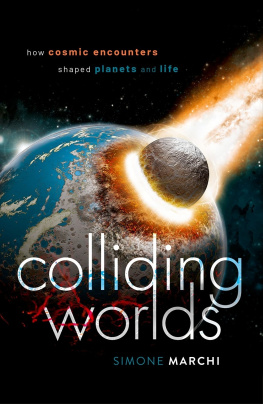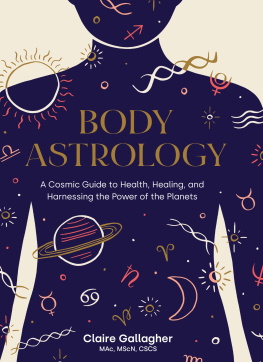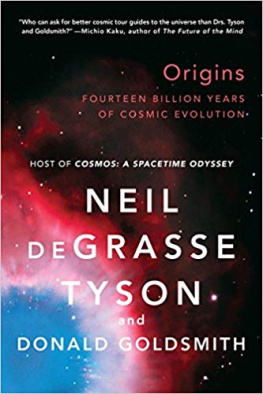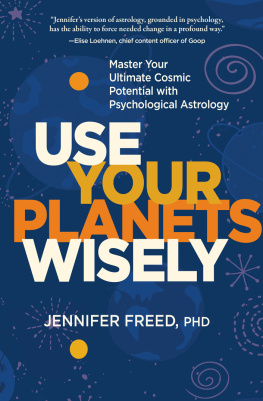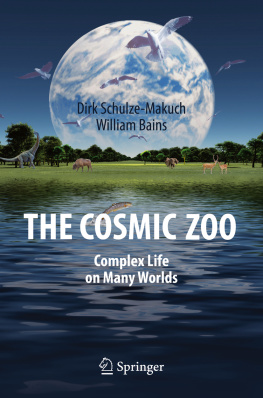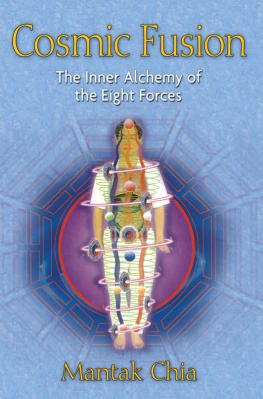Simone Marchi - Colliding Worlds : How Cosmic Encounters Shaped Planets and Life
Here you can read online Simone Marchi - Colliding Worlds : How Cosmic Encounters Shaped Planets and Life full text of the book (entire story) in english for free. Download pdf and epub, get meaning, cover and reviews about this ebook. year: 2021, publisher: OUP Oxford, genre: Children. Description of the work, (preface) as well as reviews are available. Best literature library LitArk.com created for fans of good reading and offers a wide selection of genres:
Romance novel
Science fiction
Adventure
Detective
Science
History
Home and family
Prose
Art
Politics
Computer
Non-fiction
Religion
Business
Children
Humor
Choose a favorite category and find really read worthwhile books. Enjoy immersion in the world of imagination, feel the emotions of the characters or learn something new for yourself, make an fascinating discovery.
- Book:Colliding Worlds : How Cosmic Encounters Shaped Planets and Life
- Author:
- Publisher:OUP Oxford
- Genre:
- Year:2021
- Rating:3 / 5
- Favourites:Add to favourites
- Your mark:
- 60
- 1
- 2
- 3
- 4
- 5
Colliding Worlds : How Cosmic Encounters Shaped Planets and Life: summary, description and annotation
We offer to read an annotation, description, summary or preface (depends on what the author of the book "Colliding Worlds : How Cosmic Encounters Shaped Planets and Life" wrote himself). If you haven't found the necessary information about the book — write in the comments, we will try to find it.
Simone Marchi: author's other books
Who wrote Colliding Worlds : How Cosmic Encounters Shaped Planets and Life? Find out the surname, the name of the author of the book and a list of all author's works by series.
Colliding Worlds : How Cosmic Encounters Shaped Planets and Life — read online for free the complete book (whole text) full work
Below is the text of the book, divided by pages. System saving the place of the last page read, allows you to conveniently read the book "Colliding Worlds : How Cosmic Encounters Shaped Planets and Life" online for free, without having to search again every time where you left off. Put a bookmark, and you can go to the page where you finished reading at any time.
Font size:
Interval:
Bookmark:


Great Clarendon Street, Oxford, ox2 6DP, United Kingdom
Oxford University Press is a department of the University of Oxford. It furthers the Universitys objective of excellence in research, scholarship, and education by publishing worldwide. Oxford is a registered trade mark of Oxford University Press in the UK and in certain other countries
Simone Marchi 2021
The moral rights of the author have been asserted
First Edition published in 2021
Impression: 1
All rights reserved. No part of this publication may be reproduced, stored in a retrieval system, or transmitted, in any form or by any means, without the prior permission in writing of Oxford University Press, or as expressly permitted by law, by licence or under terms agreed with the appropriate reprographics rights organization. Enquiries concerning reproduction outside the scope of the above should be sent to the Rights Department, Oxford University Press, at the address above
You must not circulate this work in any other form and you must impose this same condition on any acquirer
Published in the United States of America by Oxford University Press
198 Madison Avenue, New York, NY 10016, United States of America
British Library Cataloguing in Publication Data
Data available
Library of Congress Control Number: 2020951606
ISBN 9780198845409
ebook ISBN 9780192584113
Printed and bound by
CPI Group (UK) Ltd, Croydon, CR0 4YY
Links to third party websites are provided by Oxford in good faith and for information only. Oxford disclaims any responsibility for the materials contained in any third party website referenced in this work.
For Maku who steers the ship amid the waves
and for Jano, may your wit always burn bright.
Colliding Worlds reveals the untold story of how violent cosmic collisions shaped the formation and evolution of rocky planets, including our own. It is now well established that our Moon was born in a colossal collision, but more subtleand often counterintuitiveconsequences of ancient collisions are emerging, thanks to sophisticated models of Solar System formation, the analysis of ancient rocks both from Earth and extraterrestrial, and most exciting of all, the results of space missions to Mars and to several asteroids.
The signs of cosmic collisions are widespread: anywhere we lay our sight on a solid planetary surface, from the innermost planet Mercury to asteroids such as Vesta and Ceres, we find countless craters that have resulted from the impact of rocks from space. And rocks from the Moon, Mars, and asteroids that land on Earth as meteorites bear signs of ancient catastrophes. The Earth must surely have had its fair share of big impacts. But nature plays tricks on us, and our geologically active Earth has erased traces of these violent events.
The painstaking work of geologists, geochemists, and planetary scientists shows that the Earth was not immune to these catastrophic events; quite the contrary. Collisionsand lots of thempunctuated the evolution of our planet. We humans owe our existence to a random asteroid that played havoc some 66 million years ago, famously causing the extinction of most dinosaurs, among 75 percent of all living species. But there is more to the story than meets the eye. This book presents the latest research, drawing on the data obtained by Nasas Dawn mission to the asteroids Vesta and Ceres, by the Mars rovers, and missions to Mercury and Venus, as well as the exciting findings from ground and space telescopes concerning systems of exoplanets. With further new space missions planned for the 2020s, the future will certainly bring new discoveries, but the overall picture of the violent early days of the Solar System is now coming into focus, and that is the story I will recount here. There is much fascinating detail I have had to leave out, but keen readers are directed to the endnotes, which provide some additional information and references.
The story told in these pages follows closely my own scientific research, taking the present form thanks to researchers from different disciplines who share a common interest on these fascinating topics. I could not have written this book without their genuine interest. Aspects of the book have been shaped by discussions with, among others, Jeff Andrews-Hanna, Jim Bell, Ben Black, Bill Bottke, Robin Canup, Clark Chapman, Robert Citron, Rogerio Deienno, Cristina De Sanctis, Nadja Drabon, Lindy Elkins-Tanton, Luigi Folco, Laurence Garvie, Vicky Hamilton, David Kring, Hal Levison, Don Lowe, Tim Lyons, Tyler Lyson, Hap McSween, Alessandro Morbidelli, David Nesvorny, Cathy Olkin, Ryan Park, Silvia Protopapa, Carol Raymond, Karyn Rogers, Raluca Rufu, Everett Shock, John Spencer, Kleomenis Tsiganis, and Rich Walker. Thank you all for your advice on specific aspects. Needless to say, any errors remaining in the final text can be laid at my door. A special thank you to the late Jay Melosh, a pioneer in collisional processes, who provided a supportive review in the early stages of this project.
A big thank you goes to my editor, Latha Menon, for having believed in this project, and for outstanding professional guidance throughout the writing of this book. Thanks to Jenny Nuge for helping sort out the graphical aspects of the book. I am indebted to Tyler Lansford for kindly reading the first draft of the book and taking on the daunting task of making sense of my English.
I kept the writing of this book secret, even from close friends. They now ask, how did you find the time? I wrote it thanks to an assiduous, almost maniacal, approach. To cope with the vast scope of the book amid busy life, I set aside all the Sunday mornings over the span of a year, the alarm clock set at 6 a.m., regardless of whichever part of the world I laid down the previous night. For this, I am grateful to my wife, Cristina, who lovingly and unconditionally supported my endeavor by reading early drafts, discussing broader implications, and putting out family fires when needed, allowing me to concentrate on my book. The bulk of the writing took place at Trident Booksellers & Caf in Boulder, and was fueled by an untold amount of coffee. On many mornings, I could be found writing these pages tucked away at a small table at the back, amidst shelves of secondhand books. I delivered the manuscript just as the whole world was starting to shut down for the COVID-19 pandemic.
Enough said.
Simone Marchi
Boulder, Colorado
March 2021
We certainly see the surface of the Moon to be not smooth, even, and perfectly spherical, [] but, on the contrary, to be uneven, rough, and crowded with depressions and bulges. And it is like the face of the Earth itself.
Galileo Galilei, Sidereus Nuncius, 1610 ad
Our Earth revolves around the Sun, along with myriad other objects, from tiny atomic particles to giant gaseous planets. The expanse in which the Sun exerts a dominant role defines our immediate cosmic neighborhood, the Solar System. And its here that we begin our journey throughout space and time, by posing a seemingly simple question: How did our Solar System, and in particular our own blue-green planet, form? Its a question that has crossed countless peoples minds throughout the ages and has been pondered by the most renowned philosophers and scientists. While an exhaustive answer is still beyond our grasp, pieces of the puzzle are gradually coming together.
Font size:
Interval:
Bookmark:
Similar books «Colliding Worlds : How Cosmic Encounters Shaped Planets and Life»
Look at similar books to Colliding Worlds : How Cosmic Encounters Shaped Planets and Life. We have selected literature similar in name and meaning in the hope of providing readers with more options to find new, interesting, not yet read works.
Discussion, reviews of the book Colliding Worlds : How Cosmic Encounters Shaped Planets and Life and just readers' own opinions. Leave your comments, write what you think about the work, its meaning or the main characters. Specify what exactly you liked and what you didn't like, and why you think so.

